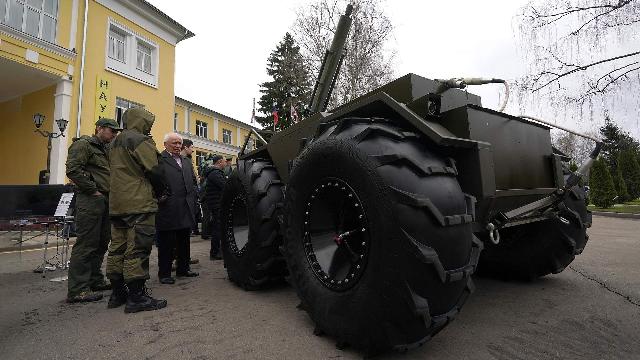Unmanned platforms have been developed for Russian sappers for any task
Robotization is becoming the main direction of the development of technology used by sappers — such a conclusion can be drawn following the results of the Day of Innovations of the Engineering Troops, which was held on April 12 at the Karbyshev Military Engineering Academy. At the event, manufacturers presented a wide range of ground-based drones. They should make the work of sappers safer and more efficient, whose profession is considered one of the most dangerous among military specialties. For more information about promising developments in this area, see the Izvestia article.
A promising direction
The experience of a special military operation has seriously affected the pace and nature of the development of mining and mine clearance equipment, Maxim Krivosheev, chairman of the Military Scientific Committee of the Engineering Troops of the Armed Forces of the Russian Federation, told Izvestia. Some of this equipment has been refined, and in addition, based on the data obtained during the fighting, fundamentally new products are being developed. In particular, we are talking about robotics and drones.
— They are now making the main contribution to changes and tactics of use and generally changing the architecture of the battlefield, — explained the representative of the engineering troops. — Together with industrial enterprises, we are developing new engineering weapons based on remote access technologies. These are not only unmanned aerial vehicles that are used for mining and to destroy enemy fortifications, but also robotic complexes that are used in kamikaze mode. We are also working on the creation of surface-based weapons to destroy hydraulic structures, bridges and crossings of the enemy.
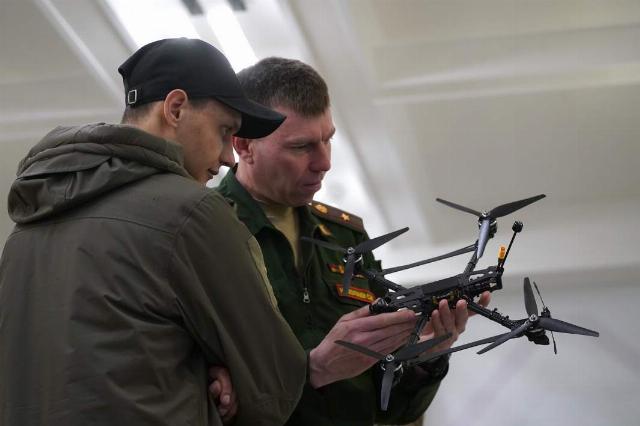
Photo: IZVESTIA/Eduard Kornienko
Image source: iz.ru
According to Maxim Krivosheev, robotization is one of the main promising areas for the development of engineering troops.
"Our first priority is to save people,— he said. — And how to do it? Remove from contact with the enemy. All this is achieved by using unmanned technologies. The engineering troops have made significant progress since the beginning of their military operation in the use of UAVs for the construction of mine-explosive barriers. A special mining battalion has been created, in which these funds are already being used on a regular basis.
Ultimately, the development of unmanned systems should lead to the fact that they will replace a sapper with a probe on the battlefield, said a representative of the engineering troops.
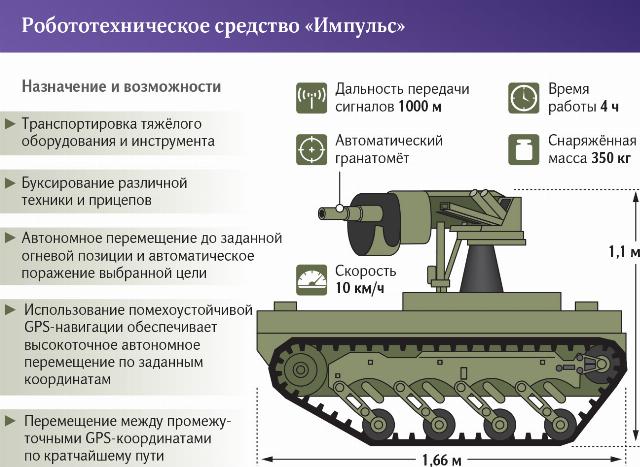
Image source: iz.ru
Robotics on the march
Many notable developments were presented at the Engineering Troops Innovation Day, which was held on April 12 at the Karbyshev Military Engineering Academy. One of them is the electric mine clearance unit "Shuttle". The UR-83P portable installation is mounted on the basis of an unmanned all-terrain platform powered by electric traction, which is produced by the Kurgan enterprise Moby Dick.
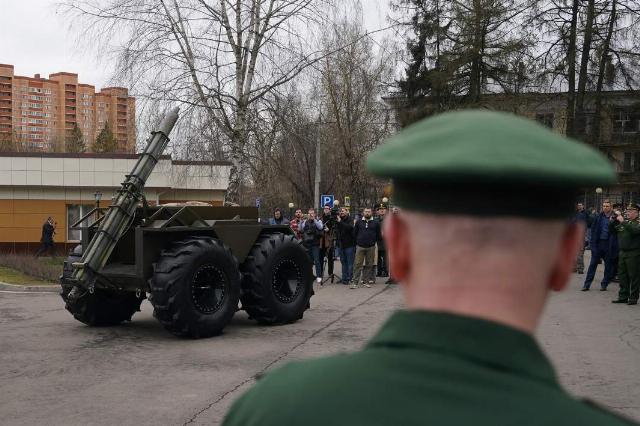
Electric mine clearance unit "Shuttle"
Image source: Photo: IZVESTIA/Eduard Kornienko
— The first advantage is that the car uses low—pressure tires and at some points allows you to drive through a minefield on which mines with contact fuses are installed. We conducted tests, determined the operating pressure range, and developed documentation," Yevgeny Kuzmin, professor of the Department of Tactical Engineering Troops of the Tyumen Higher Military Engineering Command School, told Izvestia. — The second advantage is that the car is unmanned, that is, there is no need to risk personnel.
The shuttle can reach speeds of up to 50 km / h and up to 5 km/ h on water, has a range of 30 km, and a weight of 1.3 tons. A mine clearance unit mounted on a platform can throw almost 1.4 tons of explosives at a distance of up to 440 m, thereby making passages in minefields.
The autonomous mobile platform presented by A-Systems, which does not yet have a name, is quite unusual. It is equipped with two communication systems — by means of optical fiber and two—channel radio communication - this is a reserve in case of interruption of the fiber communication channel.
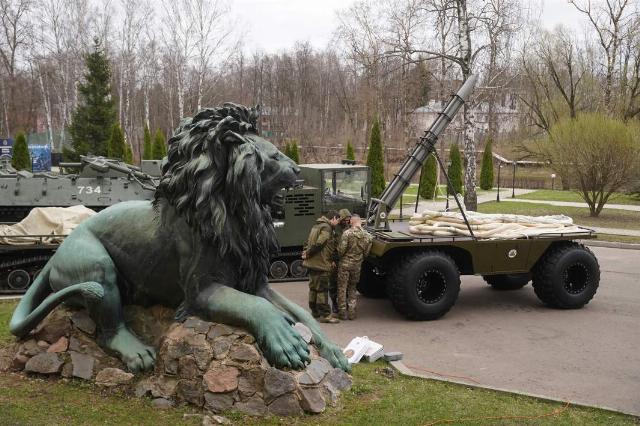
Photo: IZVESTIA/Eduard Kornienko
Image source: iz.ru
— As a rule, robotic complexes can be controlled at a distance of hundreds of meters, — explained the representative of the manufacturer. — And in the conditions of the use of electronic warfare, there is no communication at all. Our device, controlled by optical fiber, can operate at a distance of up to 20 km, including in conditions of electronic countermeasures. It can perform a wide range of tasks: mine clearance, stretch marks removal, and so on. It can be used for reconnaissance — there is a camera there, the picture is transmitted via an HD channel. At the same time, such an intelligence tool works autonomously, without emitting anything, and works in the absence of communication as such.
Solnechnogorsk Electromechanical Plant presented a prototype of the Ivy product, a remotely controlled mine producer, at the Innovation Day. It was originally developed as a kamikaze robot for transporting 100 kg of payload in one direction. However, then they decided to develop this device and equipped it with 12 guides for anti-personnel mines.
— That is, you can send him somewhere dangerous, mine everything there and bring him back. It has three tracks. Yes, this is a complex system, but at least it is working and really passable, including in urban conditions, " Artur Meshcherinov, chief designer of JSC SAMS, told Izvestia.
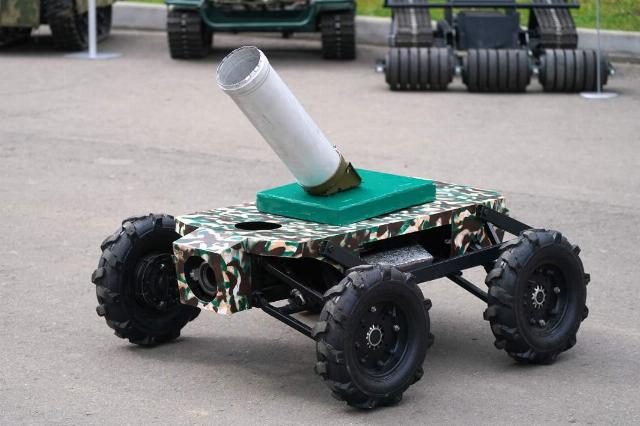
Photo: IZVESTIA/Eduard Kornienko
Image source: iz.ru
Cactus and Su-6
The robotic complex for mining "Cactus" can carry a platform for laying mines or a transport platform for delivery and evacuation. With a weight of 80 kg, it can carry up to 200 kg of cargo.
— An articulated differential suspension is used here, — a representative of the Viogem company, which developed the device, told Izvestia. — When we hit an obstacle, one of our tracks rises, and the second one descends to the other end at the same angle. Due to this, the complex can overcome obstacles higher than the caterpillar itself. The guys have already worked on the line of contact, they noted that the passability is significant: debris, urban buildings, broken bricks, concrete and so on.
Another feature of the complex is called the battery by its developers. It is possible to turn off the entire power unit remotely. In this case, the platform operates in radio silence mode, only the receiver and the microcontroller that controls everything else work.
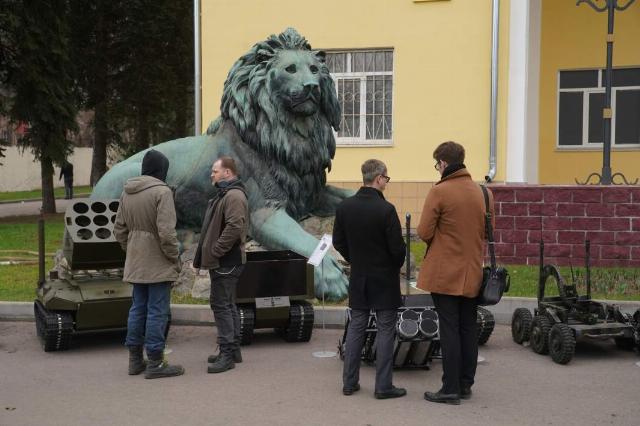
Photo: IZVESTIA/Eduard Kornienko
Image source: iz.ru
— As a result, the machine can stand in ambush for up to 2-3 weeks, the battery will consume about 200 milliamps. And then, if, say, we saw an object from the copter, we turned on the device remotely, went and worked," explained the representative of the developer company.
Another development from this manufacturer is the Su—6 ground-based robotic system. It can be equipped with a turret for an anti-tank guided missile, an automatic grenade launcher, a machine gun.
— A shot compensation system is used here, that is, the axes are located exactly on the recoil axis of the machine gun, — said the representative of the enterprise. — And therefore, when shooting at 500 m, she puts 20 by 20 cm in a square regularly, that is, her sight does not go anywhere. It's like a sniper machine gun.
In early April, Izvestia told how the mine clearance units work near Avdiivka. They use the remotely controlled mine clearance complex "Stalker 10" of the DST-Ural plant. Similar complexes have already been used in the DPR in various areas where humanitarian demining was carried out.
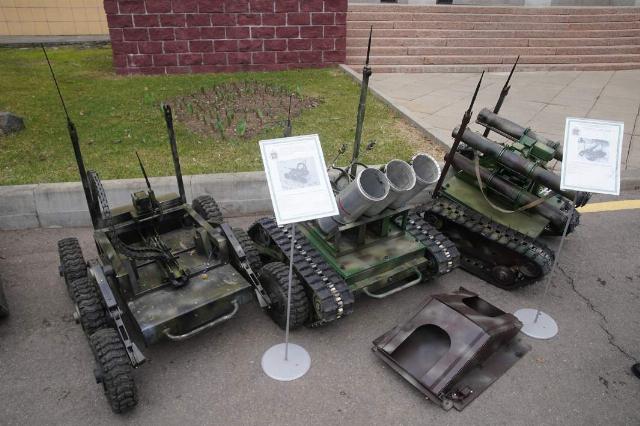
Photo: IZVESTIA/Eduard Kornienko
Image source: iz.ru
All manipulations with a heavy robotic complex are carried out by only two people. In addition, they use a small robotic mine clearance complex "Scorpion", which is optimized for operations in difficult terrain. A small platform with a rotary camera can pass under the bottom of cars, examining them. Special retractable manipulators allow you to deal with stretch marks, and the robot itself, thanks to its compact size, can be used in cramped urban conditions.
Roman Kretsul
